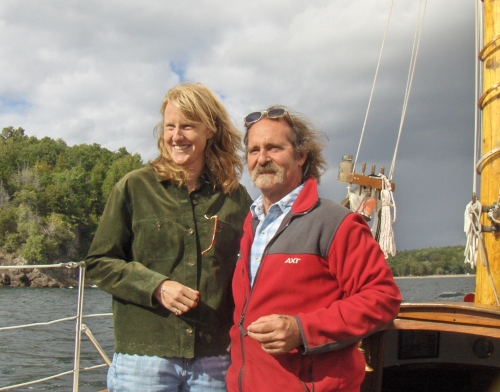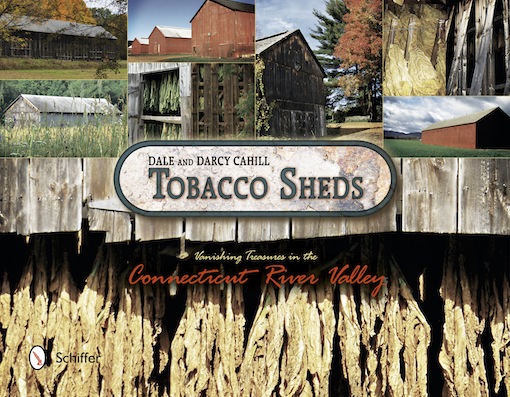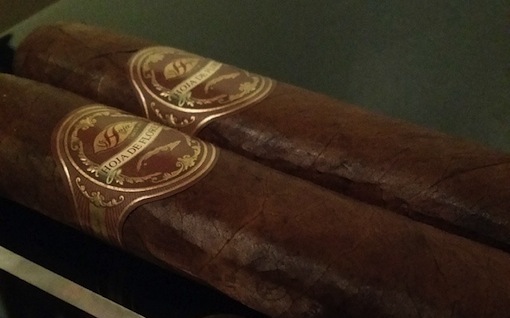Cigar Insiders: Dale Cahill and Darcy Cahill, Authors of ‘Tobacco Sheds’
23 Jun 2014
Dale and Darcy Cahill’s interest in tobacco sheds grew naturally, from observation and a simple question. When they began dating some years ago, Dale would drive down from Vermont and, along the way to her home in Connecticut, he passed quite a few big barns.
Having an engineering mind and a history of hands-on work, he was curious and asked Darcy what was in them. “I said, ‘I don’t know. Let’s go look,’†Darcy recalled. “Luckily, it happened to be the end of September, October. We walked into one of those places and… it smelled so good. And it was full of tobacco. It was just beautiful. He said, ‘We’ve got to start taking pictures of these.’â€

That was the beginning of what’s become a seeming flood of photographs, calendars, note cards, even tobacco leaves themselves—dried, preserved, and mounted on barn board. You can check it all at their website.
Now, the couple is embarking on a new project, courtesy of a Library of Congress Archie Green Fellowship, recording the oral histories of everyone they can find involved in tobacco in the Connecticut River Valley.
Their second book on the valley’s tobacco sheds just came out. It reflects their efforts to document and preserve New England’s tobacco heritage.
Dale estimates there are currently between 5,000 and 7,000 tobacco sheds still being used, whether for tobacco, vehicle storage, or something else. He’s glad to see that because, he explained, Thomas Visser, a professor of historic preservation who Dale considers a mentor, taught him that the first way to preserve things is to keep them in use. “It’s when you quit using them, they fall apart,†Dale said.
And, Dale added, even a few new sheds have gone up in recent years.
As should be obvious, New England’s agricultural heritage in tobacco is important to Dale and Darcy. It’s easy to understand when they talk lovingly about the structures they’ve toured, the people they’ve met, and the work they’ve done.
Their enthusiasm for the subject seems nearly boundless. Last year, for example, they performed—she plays fiddle, he plays guitar and mandolin—at the Luddy/Taylor Connecticut Valley Tobacco Museum’s annual cigar barbecue, which includes a farm tour and appearances by cigar company reps. “It’s very small scale,†Darcy said of the event. “It’s very sweet.â€
With the Cahills keeping their eyes, and cameras, trained on the landscape, there’s no doubt that the tobacco sheds, old and new, have someone watching over them.
Contest: Win a Free Copy of Dale and Darcy’s New Book
One lucky StogieGuys.com reader will win a free copy of Dale and Darcy’s beautiful new book, Tobacco Sheds: Vanishing Treasures in the Connecticut River Valley. Just submit a comment below and we’ll select a winner at random next week. Be sure to include your email address so we can contact you if you win (we will not publish your email address; just make sure you provide it in the space provided when you submit your comment). Here are all the contest rules. Good luck.
photo credit: TobaccoSheds.com

 This is a new offering from
This is a new offering from 


 The 1930 Collection, a six-vitola line introduced last year, is a big part of the maker. Using a Dominican wrapper and binder, with long-filler from Nicaragua and the Dominican Republic, it boasts a strength level—upper medium—beyond my image of most Nat Shermans.
The 1930 Collection, a six-vitola line introduced last year, is a big part of the maker. Using a Dominican wrapper and binder, with long-filler from Nicaragua and the Dominican Republic, it boasts a strength level—upper medium—beyond my image of most Nat Shermans.


 Still, a cigar brand with a storied history of more than 100 years and ties to Winston Churchill is one not to be ignored. This new line celebrates that history, named as it is for the year in which Alfred Dunhill opened his first tobacco shop in London.
Still, a cigar brand with a storied history of more than 100 years and ties to Winston Churchill is one not to be ignored. This new line celebrates that history, named as it is for the year in which Alfred Dunhill opened his first tobacco shop in London. Patrick Ashby
Co-Founder & Editor in Chief
Patrick Ashby
Co-Founder & Editor in Chief Patrick Semmens
Co-Founder & Publisher
Patrick Semmens
Co-Founder & Publisher George Edmonson
Tampa Bureau Chief
George Edmonson
Tampa Bureau Chief